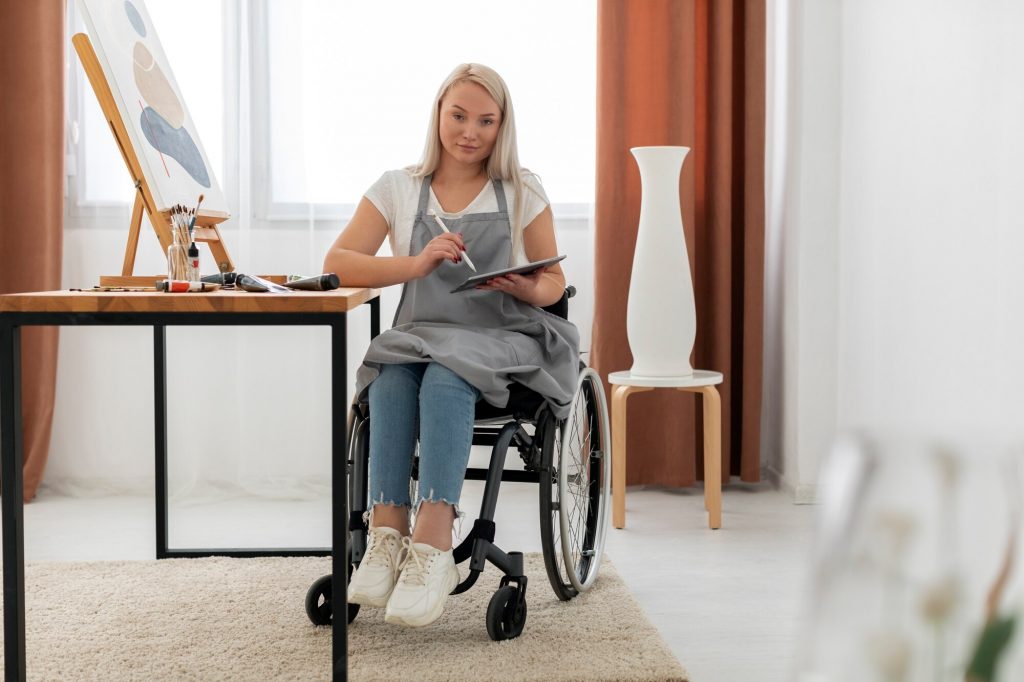Navigating the world of disability accommodation can be complex. The National Disability Insurance Scheme (NDIS) offers support, but understanding how to access it can be challenging.
This guide aims to simplify the process. It focuses on Specialist Disability Accommodation (SDA), a crucial part of the NDIS. SDA provides housing solutions for those with significant functional impairment or very high support needs.
We’ll explore the eligibility criteria for SDA. We’ll also delve into the types of accommodations available and the application process. Our goal is to provide a comprehensive resource for individuals, families, and caregivers.

Whether you’re a healthcare professional involved in disability care or a participant in the NDIS, this guide is for you. It’s designed to help you navigate the NDIS system effectively and access the support you need.
Join us as we demystify the process of accessing NDIS Specialist Disability Accommodation. Let’s make the journey less daunting and more empowering.
Understanding NDIS and Specialist Disability Accommodation (SDA)
Before we delve into the specifics of accessing SDA, it’s important to understand the broader context. The NDIS and SDA are key components of Australia’s disability support system. They work together to improve the quality of life for individuals with disabilities.
What is the NDIS?
The National Disability Insurance Scheme (NDIS) is a government initiative. It provides support to Australians with disabilities, their families, and caregivers. The NDIS is designed to help individuals lead more independent lives.
What is Specialist Disability Accommodation?
Specialist Disability Accommodation (SDA) is a specific type of housing support under the NDIS. It’s designed for participants with significant functional impairment or very high support needs. SDA includes a range of accommodation options, from apartments to group homes.
The Role of SDA in the NDIS Ecosystem
SDA plays a crucial role in the NDIS ecosystem. It provides suitable and sustainable housing solutions for those who need them most. SDA not only offers a place to live but also fosters independence and community participation.
The design of SDA properties is tailored to the needs of the residents. This includes features like wider doorways for wheelchair access or reinforced walls for those with self-injurious behavior. The ultimate goal of SDA is to enhance the quality of life for NDIS participants.

Eligibility Criteria for SDA
Accessing SDA is not automatic for all NDIS participants. There are specific eligibility criteria that must be met. These criteria ensure that SDA is provided to those who need it most.
- The participant must have an extreme functional impairment or very high support needs.
- The participant’s needs cannot be met through other mainstream or community housing options.
- SDA must represent value for money compared to other support options.
- The participant must be likely to require SDA for the long term.
Assessing Your Eligibility
The first step in accessing SDA is to assess your eligibility. This is done during your NDIS planning meeting. Your NDIS planner or Local Area Coordinator (LAC) will discuss your housing needs and goals. They will also consider your current living situation and any existing support arrangements.
It’s important to provide as much information as possible during this meeting. This will help the NDIS make an accurate assessment of your needs. Remember, the goal is to ensure that your housing supports align with your goals and enhance your quality of life.
Required Documentation for SDA
To apply for SDA, you will need to provide certain documents. These include reports from health professionals detailing your functional impairment and support needs. You may also need to provide evidence that other housing options are unsuitable for your needs. Your NDIS planner or LAC can guide you on the specific documents required for your situation.
Types of SDA and Design Categories
SDA is not a one-size-fits-all solution. It comes in various types and design categories to cater to diverse needs. The type of SDA you choose will depend on your personal preferences, support needs, and lifestyle goals.
- Apartments
- Houses
- Duplexes
- Group homes
Exploring Different SDA Options
Apartments are suitable for individuals who prefer living in urban areas close to amenities. They often come with shared common areas and can accommodate multiple residents.
Houses and duplexes offer more privacy and space. They are ideal for individuals who prefer a quieter, more suburban lifestyle or those with larger support teams.
Group homes are shared living arrangements. They are designed for individuals who require round-the-clock support. Living in a group home can also provide opportunities for social interaction and community participation.
SDA Design Categories
SDA design categories determine the level of physical accessibility and support within the accommodation. There are four categories: Improved Liveability, Fully Accessible, Robust, and High Physical Support. Your NDIS planner or LAC will help you understand which category best suits your needs.
The Application Process for SDA Funding
Applying for SDA funding can seem daunting, but with the right guidance, it can be navigated smoothly. The process involves several steps, each designed to ensure that the accommodation provided aligns with your needs and goals.
- Consultation with an NDIS planner or Local Area Coordinator (LAC)
- Assessment of your eligibility and needs
- Development of an NDIS plan that includes SDA
- Review and approval of the plan by the NDIS
Steps to Apply for SDA
The first step is to consult with an NDIS planner or LAC. They will guide you through the process, help you understand your options, and assist in preparing for the assessment.
The assessment is a crucial step. It determines your eligibility for SDA and identifies your specific needs. It’s important to provide comprehensive information about your disability and how it impacts your daily life.
Once the assessment is complete, an NDIS plan that includes SDA will be developed. This plan outlines the supports you need, including the type and location of your accommodation.
Support and Resources Available
There are numerous resources available to help you navigate the SDA application process. These include NDIS support coordinators, advocacy groups, and online resources. Don’t hesitate to seek help if you’re feeling overwhelmed. Remember, the goal is to find an accommodation solution that enhances your quality of life.
Choosing an SDA Provider and Moving In
Once your NDIS plan is approved, the next step is to choose an SDA provider. This is a crucial decision as the provider will be responsible for delivering the accommodation services outlined in your plan.
- Research potential providers
- Consider the location, type of accommodation, and services offered
- Make a decision based on your needs and preferences
Finding the Right SDA Provider
Start by researching potential providers. Look at their reputation, the types of accommodation they offer, and the services they provide.
Remember, the right provider for you is one that can best meet your needs and help you achieve your goals.
The Moving Process
Once you’ve chosen a provider, the moving process begins. This involves signing a residency agreement, preparing for the move, and settling into your new home.
It’s a significant step towards greater independence and improved quality of life. Remember, support is available throughout this process to ensure a smooth transition.
Rights, Responsibilities, and Living in SDA
Living in SDA comes with certain rights and responsibilities. It’s important to understand these to ensure a positive and empowering living experience.
- Know your rights and responsibilities
- Seek help if you’re unsure
- Advocate for your needs and rights
Understanding Your Rights
As an SDA resident, you have rights. These include the right to privacy, to be treated with respect, and to live in a safe and secure environment.
It’s important to understand these rights and to advocate for them if needed.
Participant Responsibilities
Along with rights, you also have responsibilities. These include respecting the rights of others, taking care of your living space, and adhering to the terms of your residency agreement.
Remember, fulfilling these responsibilities is key to maintaining a positive living environment.
Conclusion and Additional Resources
Navigating the path to NDIS Specialist Disability Accommodation can seem complex, but with the right information and support, it becomes manageable.
Summarizing the Path to SDA
From understanding eligibility to moving in, each step is crucial in accessing the right SDA for your needs.
Where to Find More Information
For more detailed information, consult the NDIS website or reach out to your local NDIS office.
